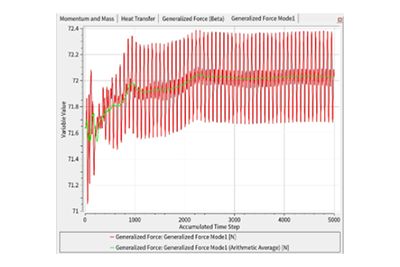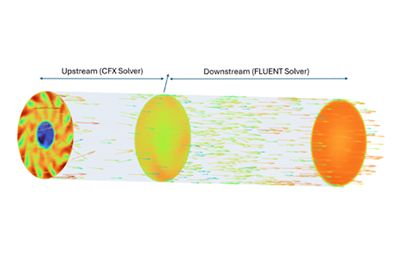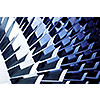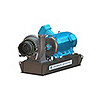簡要規格
借助 Ansys CFX 獲得領先業界的準確度。該工具可快速解決渦輪機械問題,讓工程師有更多時間專注於設計。
CFX 以其極端穩健的特色而聞名,是標準 CFD 軟體在渦輪機械應用方面的黃金標準。將求解器和模型包裝在現代化、直覺式且具彈性的 GUI 中,並具有廣泛的自訂功能,以及使用工作階段檔案、指令碼和強大的運算式語言的自動化功能。高擴充性的高效能運算有助於加速模擬作業,包括泵、風扇、壓縮機及渦輪。

借助 Ansys CFX 獲得領先業界的準確度。該工具可快速解決渦輪機械問題,讓工程師有更多時間專注於設計。
Lorem Ipsum has been the industry's standard dummy text ever since the 1500s, when an unknown printer took a galley of type and scrambled it to make a type specimen book. It has survived not only five centuries
Ansys CFX 可幫助工程師研究新型複雜渦輪葉片幾何形狀的熱特性。

「在此應用程式中嘗試的其他代碼,通常不會在此節點間距 [0.001mm] 處收斂。」研究人員針對由平面射流撞擊平板組成的測試問題驗證了 CFD 結果,並實現了非常好的相關性。
新的製造方法為更有效的渦輪機冷卻通道幾何形狀開啟了新的契機。新的幾何形狀將帶來更好的性能和效率,但同時也更複雜。為了獲得高度準確的結果,普渡大學的工程師團隊開始接觸 Ansys CFX。
工程師們在很短的周轉時間內執行了關鍵性計算。有了額外的時間,他們可以進行更深入的比較,並執行進一步的模擬,以完全最佳化他們的產品。Ansys CFX 為他們提供實作多網格「編織」設計的工具。新的渦輪機設計使用更低溫的葉片執行,並已在空軍研究實驗室中使用。
Lorem Ipsum has been the industry's standard dummy text ever since the 1500s, when an unknown printer took a galley of type and scrambled it to make a type specimen book. It has survived not only five centuries
2025 年 7 月
在 2025 R2 中,Ansys CFX 軟體更新包括混合流體-流體與流體-固體介面、廣義模型力 (測試版),以及透過系統耦合在流場邊界連結 CFX 與 Fluent。

具有混合流體-流體與流體-固體連結的區域介面可簡化案例設定。渦輪葉片的 CHT 設定被簡化,因為流道網格可以同時連接到 CHT 固體網格 (流體-固體) 與內部流體網格 (流體-流體)。

CFX 現在包含邊界的廣義力內建計算,讓使用者能更好地評估強迫響應計算中強迫項的收斂性。

透過系統耦合在流場邊界連結 CFX 與 Fluent。支援在入口、出口與開口邊界的耦合。有助於將 CFX 中的渦輪機械元件連結至 Fluent 中的上游/下游元件。
Ansys CFX 功能
Ansys CFX 的進階物理建模功能,可以幫助工程師解決渦輪機械應用中最複雜的挑戰。這款功能強大的軟體已經過廣泛驗證,並以其穩健性和準確性而聞名。簡化的渦輪增壓器設置和葉片設計整合式工具,可以確保您有更多時間用於最佳化設計。無論是用於葉片設計最佳化還是進階材料建模,CFX 都是一套可以節省時間和金錢的可靠工具。

以高準確和前所未有的速度,解決各種與流體相關的問題
對 Ansys 而言,所有使用者皆能運用本公司產品非常重要,身心障礙者也不例外。因此,我們致力於遵循美國無障礙委員會 (第 508 條)、Web內容無障礙指南 (WCAG)、與目前自願產品無障礙工具範本 (VPAT) 的格式等各項無障礙要求。
如果您面臨工程挑戰,我們的團隊將隨時為您提供協助。憑藉豐富的經驗和對創新的承諾,我們邀請您與我們聯絡。讓我們共同合作,將您的工程障礙轉化為成長和成功的機會。立即與我們聯絡,開始對話。


